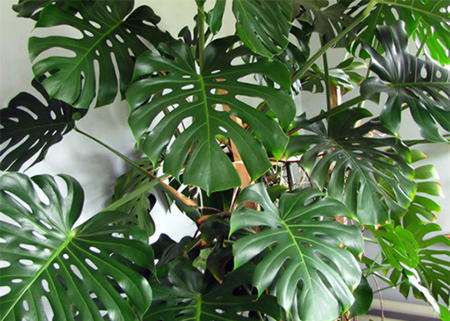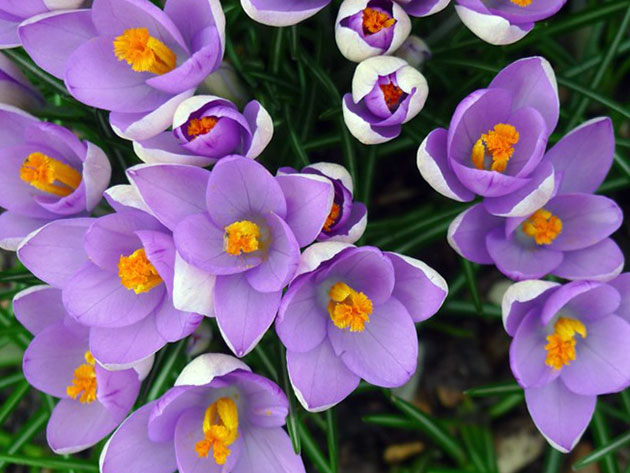Flowers that predict the weather
In those days, when there were no radio and meteorotrians, people learned about the upcoming bad weather with the help of plants. Many flowers are real weather forecasters: they are able to make a completely reliable weather forecast. Dew drops, closed flower buds most often suggest that it is going to rain, and the rainy flowering foreshadows sunny weather.
Weather forecast from colors
Caring for blooming plants, our ancestors noticed that some representatives of the flora are indifferent to the change of weather, while others change their behavior depending on the level of humidity. Most often, flowers are reacting on the weather, which may suffer from strong shower, or residents of wet rainforests, who have all life with water. The weather is able to predict the weather, and garden flowers, as well as some trees, it is only important to know what comments and phenomena to pay attention to.
Different plants are their prediction period. Some begin to "cry" a few hours before the start of the rain, others - almost before the fill, and some are even per day. Signs that indicate a change in natural conditions, several. At some plants, buds are closed, others have an aroma intensify, the thirds begin to allocate moisture drops.
All these phenomena are the result of adaptation to new conditions. Closed, tightly pressed to each other. Petals are not easy to break down the gusts of the wind and a large drop of rain. Stretch enhancing is a way to attract insects. They must have time to pollinate flowers to bad weather. The strongest in front of the rain smelled acacia and honeysuckle, and the soul of the evening can tell the fragrance. The release of droplets on the leaves is the result of increasing air humidity, at which there is no normal evaporation of moisture.
Monster and alocation

It would seem that room plants are absolutely no case before the weather on the side of the window, but they kept the genetic memory and continue to predict the rain. The most famous home weather forecasters are monster and alocation.
The tropical Liana Monster in many causes far from the best associations, but its name rises not to the word "monster", but to the Latin Monstrosus, which means "amazing, whimsical". Huge carved leaves Monsters are very beautiful, and air supple roots give it a mysterious look. Before the rain on the leaves, quite large drops appear, so if you find that Monster cries, do not forget to grab an umbrella.
Alocation is also from the tropics. Its leaves with bright veins are located on long stems. Millions of alloites are located on the sheet surface, through which the flower gets rid of extra moisture. In the homeland of alocation in the rainy season, there are so many that the plant had to find a way to dump the surplus. So with increasing air humidity, which happens before the rain, the flower also begins to cry. However, the same effect may appear with too strong watering, so you should not trust the flower weather forecast.
Malva and Ipomey
The beauty of Malv can compete with many tropical plants: lush buds on high stems are able to decorate any garden. Typically, Malva is planted with groups: so they look more attractive. If in the middle of a sunny day you noticed that the flowers began to disparate, and then closed at all, do not plan a campaign on a river or long walks. Flowers of Malva closes the eve of bad weather.
IPOMEYA is an annual entry plant, which is often used for decorative vertical landscaping. Bright white, pink, red and blue bells are buried in a juicy green leaves. As a rule, IPOMEYA blooms only in the morning clock and fades at the light of the sun. On a cloudy day, she can hold out longer, and then the hedge or wall of the house will delight the magnificent spectacle of the flowering of hundreds of buds.
It is worth the rain clouds to get closer, and the Ipomea folds the petals, so that the rain has already matured buds may not disclose. The property of the plant is quite understandable: the petals are too gentle to withstand the head of the rain jets. In addition, bees and other insects are still hiding, so the plant does not make sense to spend the forces on the flower disclosure.

Tulips and crocuses
In the spring primroses of the age of a non-national. And, and crocuses for a week and other time to raise buds to the Sun, dismissed and fond. Gardeners have long noticed the feature of the tulips: before the onset of rain, their buds are closed. Flower shape resembles a glass. If he had not learned to close, the water would fill the natural vessel, and the stem would have broken. But even if the flower would be resistant after the shower, all the precious pollen would be washed away and disappeared without any benefit. Fortunately, tulips learned to determine the humidity of the air and predict the weather.
Crocuses and tulips react not only to humidity, but also temperature. Buds are closed at the slightest threat of cooling. Having a flowerbed of bulbous plants, it is easy to determine how warm the coming day or night will be. Interestingly, crocuses are divided into autumn and spring varieties. Autumn bloom in September, when other bully longs have been filled away and fell asleep. The weather is able to predict the spring, and autumn varieties.
Dandelions
Some quite cute flowering plants have a not better reputation among gardeners. The dandelion is considered a weed, because it has an amazing vitality and reproduction ability. In addition to light white parachuts, it can multiply and root particles, so that the dandelions of the thickets fall several times.
Dandelion - another plant-barometer. It is capable of predicting raining a few hours before the fall of the first drops. In sunny weather, golden revealed until the evening. But if you see that the meadow from the gold became green, it will soon go rain.
Interestingly, the dandelion closes not only flowers. Fluffy heads with seeds also know how to turn around so that the gunki do not nailed with water to the ground, and they could fly as far as possible from the parent plant.
